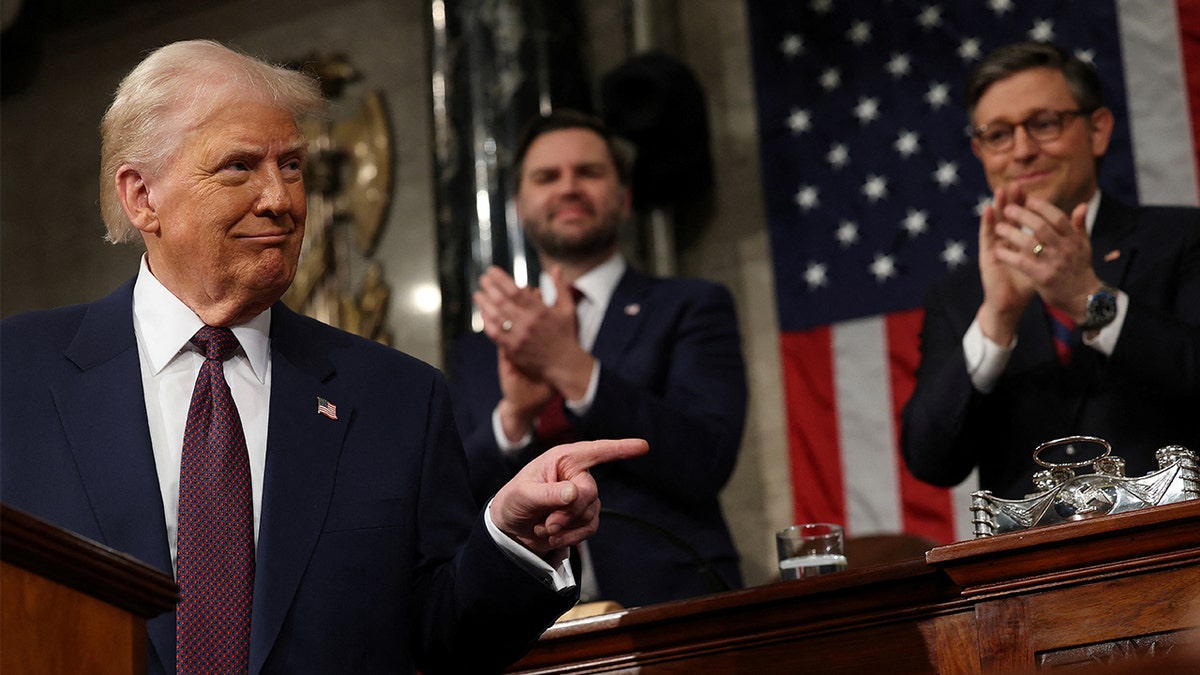
Trump’s "Weave" Communication Style Takes Center Stage in Joint Address to Congress
Former President Donald Trump’s recent joint address to Congress was marked not only by its policy pronouncements and political jabs but also by his distinctive communication technique, which he has affectionately termed "the weave." This approach, characterized by lengthy asides and seemingly tangential digressions, was strategically employed throughout the speech to underscore key themes and connect with the audience on a personal level.
Trump’s self-proclaimed "weave" involves a deliberate departure from the main narrative, venturing into related anecdotes, personal observations, or even seemingly unrelated topics. However, the essence of the technique lies in the ability to seamlessly return to the original point, weaving together seemingly disparate elements into a cohesive whole. As Trump explained during a recent appearance on the "Flagrant" podcast with comedian Andrew Schulz, the "weave" requires an "extraordinary memory" and the ability to "come back to where you started."
During his joint address, Trump’s "weave" was evident in several instances. While discussing the actions he has taken since assuming office, he veered into a critique of Democrats’ perceived unwillingness to support his agenda. "This is my fifth such speech to Congress, and once again, I look at the Democrats in front of me, and I realize there is absolutely nothing I can say to make them happy, or to make them stand or smile or applaud, nothing I can do," Trump remarked. He continued, "I could find a cure to the most devastating disease, a disease that would wipe out entire nations or announce the answers to the greatest economy in history, or the stoppage of crime to the lowest levels ever recorded, and these people sitting right here will not clap, will not stand, and certainly will not cheer for these astronomical achievements. They won’t do it no matter what. Five- five times I’ve been up here! It’s very sad, and it just shouldn’t be this way."
This extended aside, while seemingly critical, served to highlight Trump’s perception of partisan obstructionism and reinforce his message of unity and cooperation. He subsequently challenged Democrats, urging them to "join us in celebrating so many incredible wins for America? For the good of our nation. Let’s work together and let’s truly make America great again."
Later in the speech, Trump employed the "weave" to address concerns about government spending and alleged wasteful programs. He cited examples uncovered by Elon Musk’s DOGE, including "45 million for Diversity, Equity and Inclusion scholarships in Burma" and "20 million for the Arab Sesame Street in the Middle East." Trump even injected humor into the segment, reacting to DOGE’s findings with remarks such as, "$40 million to improve the social and economic inclusion of sedentary migrants. Nobody knows what that is," eliciting laughter from the House chamber. He continued, "$8 million to promote LGBTQI+ in the African nation of Lesotho, which nobody has ever heard of… $8 million for making mice transgender. This is real!"
These digressions, while seemingly lighthearted, served to underscore Trump’s broader message of fiscal responsibility and his commitment to scrutinizing government spending.
Beyond policy pronouncements, Trump’s "weave" also extended to personal anecdotes and made-for-TV moments designed to resonate with the audience on an emotional level. He recognized 13-year-old brain cancer survivor DJ Daniel, making him an honorary Secret Service agent, and informed high school senior Jason Hartley, the son of a deceased veteran, that his application to West Point had been approved. Trump also honored Alexis Nungaray, the Angel Mom of a 12-year-old girl murdered by illegal immigrants, announcing that his administration was renaming the Texas Anahuac National Wildlife Refuge in her daughter’s memory.
These personal touches, interwoven into the fabric of the speech, served to humanize Trump and connect with viewers on a more intimate level, transcending political divides.
Trump’s use of the "weave" has been met with mixed reactions. Supporters praise his ability to connect with audiences on a personal level and his willingness to challenge conventional political norms. Critics, on the other hand, view the technique as rambling, unfocused, and distracting from the substance of his message.
During his appearance on the "Flagrant" podcast, Trump acknowledged the divergent opinions surrounding his communication style. "I do a thing called the weave," he explained. "And there are those that are fair that say, ‘This guy is so genius.’ And then others would say, ‘Oh, he rambled.’ I don’t ramble. You have to have certain things. You need an extraordinary memory, because you have to come back to where you started. A weave is only good if you can go back."
Whether viewed as genius or rambling, Trump’s "weave" has become an integral part of his political persona, shaping his communication style and influencing the way he connects with audiences. His joint address to Congress served as a prime example of this distinctive technique, showcasing its potential to both captivate and divide.
